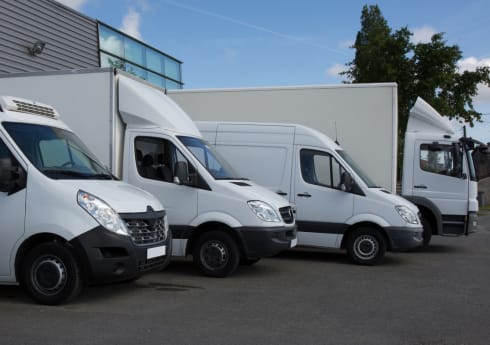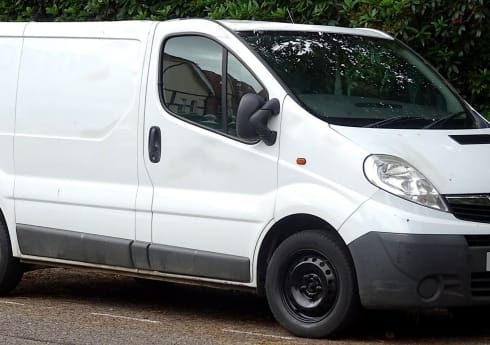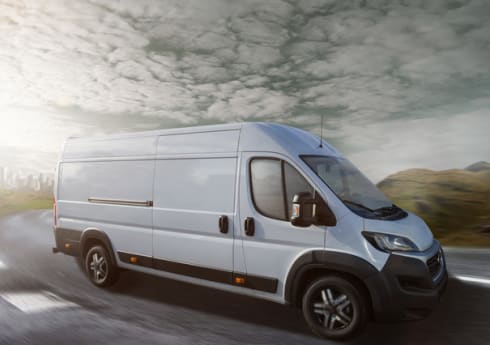How To Save Your Business Money With Fleet Van Tracking

How Van Tracking Can Save Your Business Money
Whether you have five vans or 500, if you are not taking advantage of van tracking tools and solutions, you will be missing out on huge cost savings. Fuel, insurance, and maintenance are just three areas where there is money to be saved by business operators when they deploy van tracking solutions into their fleets.
Fleet tracking is nothing new. Companies have been tracking their vans and fleet vehicles for decades. As technology has evolved, however, van tracking has become a lot more accessible, beneficial, and cheaper to implement for companies.
Today, commercial vehicle tracking, especially truck and van tracking, is very popular. Van tracking tools and solutions, such as GPS systems and telematics, are used by fleet managers to improve efficiency, save on costs, and streamline their daily operations.
Having a van tracking system can also help eliminate many of the difficulties and complexities associated with fleet management, helping your business run smoother.
Carry on reading this guide if you want to learn more about:
-
the principles of vehicle tracking;
-
what van tracking systems are and how they work;
-
why tracking vans is a commercially responsible thing to do;
-
what features and advantages you get from van tracking; and
-
the problems that van tracking solves.
What is Van Tracking?
Van tracking — also known as GPS tracking and sometimes referred to with the term “telematics” (the systems that power van tracking) — combines tracking and technology with an online platform, often cloud-based software, where information about fleet vehicles can be viewed in real time. As your fleet vehicles are used by your drivers, van tracking systems collect and collate data which can then be used as business intelligence for making informed decisions, finding inefficiencies, and ultimately saving money.
To capture data, tracking devices are installed inside vehicles that form part of a fleet. These devices then collect different kinds of data, from the starting and disengaging of the engine to fuel consumption, gear changes, acceleration, braking, and more. All data collected can be matched to the location where it was collected for better analysis.
Location-based tracking is mainly provided by the Global Positioning System (GPS), however, other location technologies may sometimes be used, such as GLONASS.
Accessing data collected by van tracking systems is as simple as logging in to an online dashboard and searching for what you need. A range of other solutions are available too, such as smartphone applications and downloadable excel and PDF formats for information sharing.
How Does a Van Tracking System Work?
Van tracking systems come in two parts – a hardware and software part. The hardware, which is installed directly into fleet vans, is supported by GPS and collects data in combination with a van’s coordinates.
The hardware can either be hardwired, where three-wire installation is used to connect the system to the engine and power, or portable, where the hardware is plugged into a power source. Portable systems are great if you solely want fleet vehicle positions to be tracked whereas hardwired systems are required for complete monitoring of all driving metrics.
For example, when the engine is turned on, this is recorded with a date, time, and the van’s exact location. The same happens when the engine is disengaged, when the clutch is changed, or when the driver brakes. Other information that can be collected includes data about vehicle diagnostics, maintenance, and driving habits.
Together, van tracking hardware and all the software features provide fleet managers with a top-down, real-time view of their fleet vehicles. Using it, they can manage vehicle maintenance, identify problem drivers, view fuel efficiency, improve workflows and more.
Main Features of a Fleet Tracking System
The exact features that a van tracking system will offer depends on the provider and how complex or high-tech the hardware and software is. That being said, there are many features that virtually every van tracking system will include, such as:
-
Real-time location tracking of fleet vehicles on an interactive map.
-
Driver monitoring in real-time.
-
Driver history in the form of reports that detail driving habits, speed, etc.
-
Fleet summary reports that provide an insight into how yours is performing.
-
Real-time alerts that let you know when something is amiss, such as a speeding vehicle, lots of harsh braking, or when a driver arrives at a designated location.
On top of these core features, there is also a number of add-ons available for businesses that want them. Driver ID systems, for example, require your drivers to scan their work ID, pass or key fob before being able to start the engine by depressing the clutch.
These help to prevent theft or unauthorised use by employees who are not approved to drive certain vehicles. Other add-ons include panic buttons, an option to disable tracking for vehicles that are part business use, part personal use, and fuel card integration for transaction reporting, purchase monitoring, and cross-checks.
Why Van Tracking Makes Sense
No matter your fleet’s size, van tracking is always a responsible thing to do from a commercial standpoint. There are many problems that fleet tracking technology is able to solve if accompanied by a robust fleet management process, and in any case, there are lots of cost savings to be made.
Here’s why you should strongly consider investing in van tracking:
1. It Saves Your Business Money
By far the biggest and most commonly given benefit of van tracking is the inherent ability for a good system to save your business money. As you may well know, operating a fleet is an expensive undertaking and it is therefore important to do all you can to save money wherever possible, and a van tracking system is a very useful tool for this purpose.
Think about it — telematics and van tracking systems provide you with reams of data relating to everything from fuel use and efficiency to driver habits and vehicle health. Armed with this data, you can make better decisions that keep your fuel efficiency up, driver habits in check, and vehicles in a well-maintained condition.
All these things have the potential to waste lots of money if they are not monitored. For example, drivers with bad habits (speeding, use of incorrect gears, harsh acceleration, and engine idling, amongst other things) waste more fuel, and over time this can add up to well in the four or five-figure range.
2. It Keeps Your Drivers Safer
The safety of your drivers should be at the top of your or any fleet manager’s agenda. These are the people who keep your business moving and it is important to make sure that they are operating in a safe work environment, even when on the road.
By being able to track your vans and locate drivers in real time, you can provide assistance whenever necessary, for example by helping re-route them to avoid a road made dangerous by weather conditions. Van tracking also helps you keep on top of vehicle maintenance and health, meaning that your drivers are operating vehicles that are looked after and, as a result, safer.
3. It Saves Lots of Time
With tracking technology, you can divert your fleet drivers around accident sites, through congested traffic, and along the most time-efficient routes. As they say, time is money. The quicker your drivers can get from A to B, the more money you will save in not only fuel but wear and tear too because your vehicles accumulate fewer unnecessary miles on the clock.
If you choose to opt for a van tracking solution in conjunction with fuel cards, you can also use your system to help your drivers pinpoint their closest fuel station. Again, this saves time, especially if your driver is in an unfamiliar location.
4. It Helps You Serve Customers Better
Van tracking systems make your fleet more productive and efficient, meaning you can provide a higher level of service to your customers. They can also be used to provide your customers with point-in-time updates on driver locations, estimated delivery times, and more. Customers are far more likely to return to you if you are able to provide accurate delivery time estimates and provide a decent level of service. As you may be aware, shipping can be quite the pain point for consumers who don’t want to be inconvenienced by missed delivery slots and inaccurate windows.
5. It Helps to Reduce Your Insurance Premiums
Insurance companies are well aware that vehicles utilising telematics and tracking systems are a lot less likely to be involved in accidents and are a lesser target for criminals.
Most insurers will therefore give you a discount on your premiums simply for using van tracking, and over time your fleet insurance premiums are likely to drop further as safer driving and well-maintained vehicles translates to fewer insurance claims.
hoosing the Best Van Tracking System
To choose the right van tracking system for your business, you need to ensure that it includes all the features that your fleet needs. As we touched upon above, most fleet tracking systems come with a variety of standard features. These should include:
-
GPS tracking
-
Driver safety tracking and recording of core information
-
An online system for data analysis and real-time tracking
-
Integration with fuel cards
-
Communication and navigation functionality
-
Ongoing customer support
On top of these, there are several add-on features, which may or may not be ‘premium’ extras, that you may want to look out for. These may include:
-
Customisable alert systems
-
Mobile access
-
In-vehicle driver authentication
-
Dashboard cameras
Before you settle on a van tracking system or provider, make sure you have thoroughly researched all your options and know exactly what service and solutions you are looking for. Some questions you may want to ask yourself could include:
-
How many vehicles do I need to track?
-
How much can the business afford per month?
-
What type of information do I want to track?
-
What features do I need now and what might I need in the future?
-
What potential ROI could van tracking give me?
Compare Van Tracking Systems
Finding the right provider of van tracking systems can be difficult, even if you have done your homework. There are lots of providers available on the market, and it can be tempting to settle for the first system that comes semi-close to what you are looking for — don’t. With fleet tracking systems, you want to make sure that you are picking the perfect system in order to maximise the savings and benefits you receive.
This is where iCompario comes in.
Using iCompario’s online comparison tool, you can search for and compare the best van tracking systems from a range of different providers. Once you have narrowed down your options, you can reach out to iCompario’s fleet industry experts to take the next steps.
With decades upon decades of experience, iCompario’s fleet experts have the knowledge and knowhow to match your business up with the perfect van tracking system.
Vehicle tracking can give you a bird’s eye view of your fleet at all times, making it quick and easy to manage all your drivers. You can deal with breakdowns or accidents immediately and even check the driver dashcam footage or speeding incidents from your mobile phone.
As a free comparison site, iCompario can help you find the right system for the right price.



